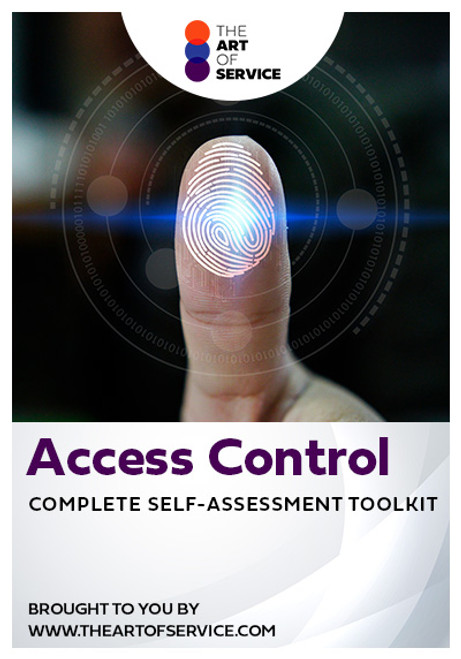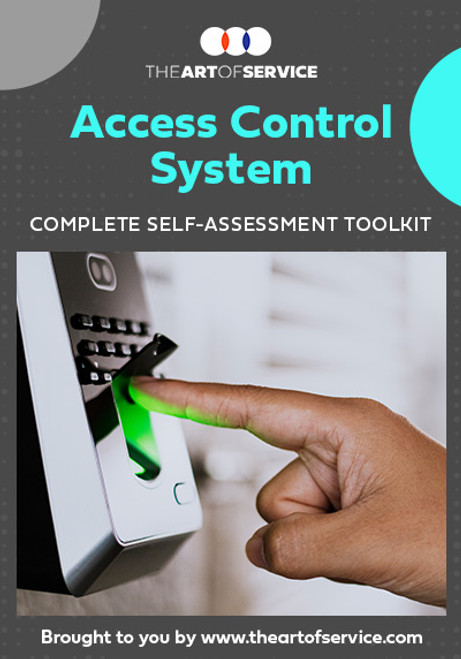- Lead developing and enforcing Data Security and Access Control policies and implementing effective controls for a resilient data ingestion process.
- Establish that your organization provides information, signs, posters, barriers, and other materials to warn of potential and actual safety hazards and to prevent access to hazardous conditions.
- Support a holistic marketing Database Management strategy that supports data unification and access across your Internal Systems, ensures Data Quality, and enforces governance and measurement.
- Make sure that your group performs configuration, maintenance and support of SIEM, Privileged Access management, and related Cybersecurity systems.
- Perform administration services as creation, access modification, and deletion of end User Accounts.
- Write scripts for Access Control auditing with your team and network Vulnerability Scan parsing.
- Be accountable for coordinating security rules and internal access authorization with operations leadership and management.
- Be accountable for configuring conditional access policies for Exchange On Line, Teams, OneDrive, and, O365 applications.
- Develop strategy and deployment plans for extending Identity and Access management services to additional applications.
- Manage the security oversight and assessment of Information Systems assets and the protection of systems from intentional or inadvertent access or destruction.
- Ensure that the Disaster Recovery, Business Continuity, Risk Management and Access Controls needs of the facility are addressed.
- Confirm your strategy provides input on processes and tools that enable your organization to identify, document, and access Intellectual Capital and information content.
- Be accountable for controlling authorization level for all personnel requiring User Access to automated Information Systems.
- Confirm your organization reduces the risk of technological breaches and protects sensitive digital information; ensures that backup/recovery plans and security standards exist and are followed for all systems; ensures proper performance, security, and monitoring of all technologies and platforms.
- Assure your group oversees research into industry stands, architectural and structural options, features and functionality; and creating use cases, models, design structures/patterns; and conducting planning meetings.
- Be accountable for compromising Active Directory environments and demonstrating business impact by identifying and obtaining access to business critical assets/information.
- Make sure that your organization assess, identify and evaluate the risks and controls over financial, and operational processes, Systems Development, Change Management, IT Vendor Management, Access management, Data integrity, Information security, Disaster Recovery, and Infrastructure Management.
- Use Social Engineering techniques to obtain sensitive information, Network Access and physical access to client sites.
- Develop lifecycle identity, Access management, privileged identity strategies, architecture and Implementation Plans across your organization and work with domains to implement Access management controls.
- Be accountable for optimizing client performance through efficient dependency management and Data Access patterns.
- Maintain general working knowledge and awareness of concepts as Identity and Access management (IAM), Access Controls, Authorization, Encryption of Data At Rest / in transit, multi factor authentication, Web Application Firewalls, etc.
- Ensure you convey; lead business IT application developers, application owners and lead Business Analysts to integrate system resources with IAM solutions.
- Develop and implement methodologies, algorithms and diagnostic tools for testing model robustness, stability, reliability, performance and Quality Control of modeling data.
- Employ Data Analysis techniques and methods to build varied regression and classification models for defect identification and Process Optimization.
Save time, empower your teams and effectively upgrade your processes with access to this practical Computer Access Control Toolkit and guide. Address common challenges with best-practice templates, step-by-step Work Plans and maturity diagnostics for any Computer Access Control related project.
Download the Toolkit and in Three Steps you will be guided from idea to implementation results.
The Toolkit contains the following practical and powerful enablers with new and updated Computer Access Control specific requirements:
STEP 1: Get your bearings
Start with...
- The latest quick edition of the Computer Access Control Self Assessment book in PDF containing 49 requirements to perform a quickscan, get an overview and share with stakeholders.
Organized in a Data Driven improvement cycle RDMAICS (Recognize, Define, Measure, Analyze, Improve, Control and Sustain), check the…
- Example pre-filled Self-Assessment Excel Dashboard to get familiar with results generation
Then find your goals...
STEP 2: Set concrete goals, tasks, dates and numbers you can track
Featuring 999 new and updated case-based questions, organized into seven core areas of Process Design, this Self-Assessment will help you identify areas in which Computer Access Control improvements can be made.
Examples; 10 of the 999 standard requirements:
- Do you know what you are doing? And who do you call if you don't?
- What is it like to work for you?
- For estimation problems, how do you develop an estimation statement?
- Do you have organizational privacy requirements?
- Who are the Key Stakeholders for the Computer Access Control evaluation?
- How do you establish and deploy modified action plans if circumstances require a shift in plans and rapid execution of new plans?
- Do you think Computer Access Control accomplishes the goals you expect it to accomplish?
- Are assumptions made in Computer Access Control stated explicitly?
- How do you define collaboration and team output?
- Where do you need to exercise leadership?
Complete the self assessment, on your own or with a team in a workshop setting. Use the workbook together with the self assessment requirements spreadsheet:
- The workbook is the latest in-depth complete edition of the Computer Access Control book in PDF containing 994 requirements, which criteria correspond to the criteria in...
Your Computer Access Control self-assessment dashboard which gives you your dynamically prioritized projects-ready tool and shows your organization exactly what to do next:
- The Self-Assessment Excel Dashboard; with the Computer Access Control Self-Assessment and Scorecard you will develop a clear picture of which Computer Access Control areas need attention, which requirements you should focus on and who will be responsible for them:
- Shows your organization instant insight in areas for improvement: Auto generates reports, radar chart for maturity assessment, insights per process and participant and bespoke, ready to use, RACI Matrix
- Gives you a professional Dashboard to guide and perform a thorough Computer Access Control Self-Assessment
- Is secure: Ensures offline Data Protection of your Self-Assessment results
- Dynamically prioritized projects-ready RACI Matrix shows your organization exactly what to do next:
STEP 3: Implement, Track, follow up and revise strategy
The outcomes of STEP 2, the self assessment, are the inputs for STEP 3; Start and manage Computer Access Control projects with the 62 implementation resources:
- 62 step-by-step Computer Access Control Project Management Form Templates covering over 1500 Computer Access Control project requirements and success criteria:
Examples; 10 of the check box criteria:
- Cost Management Plan: Eac -estimate at completion, what is the total job expected to cost?
- Activity Cost Estimates: In which phase of the Acquisition Process cycle does source qualifications reside?
- Project Scope Statement: Will all Computer Access Control project issues be unconditionally tracked through the Issue Resolution process?
- Closing Process Group: Did the Computer Access Control Project Team have enough people to execute the Computer Access Control project plan?
- Source Selection Criteria: What are the guidelines regarding award without considerations?
- Scope Management Plan: Are Corrective Actions taken when actual results are substantially different from detailed Computer Access Control project plan (variances)?
- Initiating Process Group: During which stage of Risk planning are risks prioritized based on probability and impact?
- Cost Management Plan: Is your organization certified as a supplier, wholesaler, regular dealer, or manufacturer of corresponding products/supplies?
- Procurement Audit: Was a formal review of tenders received undertaken?
- Activity Cost Estimates: What procedures are put in place regarding bidding and cost comparisons, if any?
Step-by-step and complete Computer Access Control Project Management Forms and Templates including check box criteria and templates.
1.0 Initiating Process Group:
- 1.1 Computer Access Control project Charter
- 1.2 Stakeholder Register
- 1.3 Stakeholder Analysis Matrix
2.0 Planning Process Group:
- 2.1 Computer Access Control Project Management Plan
- 2.2 Scope Management Plan
- 2.3 Requirements Management Plan
- 2.4 Requirements Documentation
- 2.5 Requirements Traceability Matrix
- 2.6 Computer Access Control project Scope Statement
- 2.7 Assumption and Constraint Log
- 2.8 Work Breakdown Structure
- 2.9 WBS Dictionary
- 2.10 Schedule Management Plan
- 2.11 Activity List
- 2.12 Activity Attributes
- 2.13 Milestone List
- 2.14 Network Diagram
- 2.15 Activity Resource Requirements
- 2.16 Resource Breakdown Structure
- 2.17 Activity Duration Estimates
- 2.18 Duration Estimating Worksheet
- 2.19 Computer Access Control project Schedule
- 2.20 Cost Management Plan
- 2.21 Activity Cost Estimates
- 2.22 Cost Estimating Worksheet
- 2.23 Cost Baseline
- 2.24 Quality Management Plan
- 2.25 Quality Metrics
- 2.26 Process Improvement Plan
- 2.27 Responsibility Assignment Matrix
- 2.28 Roles and Responsibilities
- 2.29 Human Resource Management Plan
- 2.30 Communications Management Plan
- 2.31 Risk Management Plan
- 2.32 Risk Register
- 2.33 Probability and Impact Assessment
- 2.34 Probability and Impact Matrix
- 2.35 Risk Data Sheet
- 2.36 Procurement Management Plan
- 2.37 Source Selection Criteria
- 2.38 Stakeholder Management Plan
- 2.39 Change Management Plan
3.0 Executing Process Group:
- 3.1 Team Member Status Report
- 3.2 Change Request
- 3.3 Change Log
- 3.4 Decision Log
- 3.5 Quality Audit
- 3.6 Team Directory
- 3.7 Team Operating Agreement
- 3.8 Team Performance Assessment
- 3.9 Team Member Performance Assessment
- 3.10 Issue Log
4.0 Monitoring and Controlling Process Group:
- 4.1 Computer Access Control project Performance Report
- 4.2 Variance Analysis
- 4.3 Earned Value Status
- 4.4 Risk Audit
- 4.5 Contractor Status Report
- 4.6 Formal Acceptance
5.0 Closing Process Group:
- 5.1 Procurement Audit
- 5.2 Contract Close-Out
- 5.3 Computer Access Control project or Phase Close-Out
- 5.4 Lessons Learned
Results
With this Three Step process you will have all the tools you need for any Computer Access Control project with this in-depth Computer Access Control Toolkit.
In using the Toolkit you will be better able to:
- Diagnose Computer Access Control projects, initiatives, organizations, businesses and processes using accepted diagnostic standards and practices
- Implement evidence-based Best Practice strategies aligned with overall goals
- Integrate recent advances in Computer Access Control and put Process Design strategies into practice according to Best Practice guidelines
Defining, designing, creating, and implementing a process to solve a business challenge or meet a business objective is the most valuable role; In EVERY company, organization and department.
Unless you are talking a one-time, single-use project within a business, there should be a process. Whether that process is managed and implemented by humans, AI, or a combination of the two, it needs to be designed by someone with a complex enough perspective to ask the right questions. Someone capable of asking the right questions and step back and say, 'What are we really trying to accomplish here? And is there a different way to look at it?'
This Toolkit empowers people to do just that - whether their title is entrepreneur, manager, consultant, (Vice-)President, CxO etc... - they are the people who rule the future. They are the person who asks the right questions to make Computer Access Control investments work better.
This Computer Access Control All-Inclusive Toolkit enables You to be that person.
Includes lifetime updates
Every self assessment comes with Lifetime Updates and Lifetime Free Updated Books. Lifetime Updates is an industry-first feature which allows you to receive verified self assessment updates, ensuring you always have the most accurate information at your fingertips.







